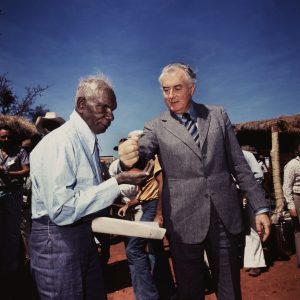Flowers for the dead, a man remembered
By LAURA TEBB
On Sunday the 23rd of October 2011, the body of 21-year-old William Boyle was pulled from Lake Burley Griffin. Boyle had been reported missing on Saturday morning after last being seen by friends on Thursday evening. Police say there appears to be no suspicious circumstances. It appears he drowned whilst skylarking after a day of celebrations and drinking.
On Monday morning, the centre of Canberra appeared to be its usual bustling self – the roads were busy with traffic and crowds of 9-to-5 workers making their way purposefully to their jobs. But that morning, if you had driven across Commonwealth Bridge overlooking Lake Burley Griffin, you would have noticed something unusual — a congregation of people standing on the bridge’s walkway holding flowers in their hands.
Some were carrying a single flower — a rose, a lily — others a multi-coloured bouquet. All stood quietly, some with tears in their eyes, hugging one another and offering consoling words.
One by one, they walked forward and placed their tributes on the edge of the bridge’s walkway; leaving them as a sign of commemoration of the untimely death of a popular young man. As the day passed, more people came and went, many leaving a symbol of their love and thoughts behind on the walkway.
Standing there, I witnessed a solitary figure walk forward and silently place a bouquet of white flowers on the concrete. Slowly lowering herself to the pavement, seemingly oblivious to the hustle and bustle of the city, she stared silently out towards the still waters of the lake. Whether it was in sadness or in hope, we cannot know, but while cars continued to drive past she remained fixed to this small space. As people hurried past focussing on the day to come — cyclists peddled by, joggers ran past — she continued to kneel. She did not move, or make a sound; kneeling for what seemed an eternity.
Finally she rose, standing with her back against the noise and distraction of the city, and paused momentarily to gaze over the stillness of the lake before slowly walking away. As she moved away from the many flowers that adorned the footpath, her face conveyed nothing but grief. And as she slowly got further and further away, all that remained of her presence were a bunch of white flowers — a symbolic message to let people know that someone was there.
Over the ensuing days people have continued to place flowers, a cross, a trinket, something to honour a life lost. They will not be the first, or the last people to place flowers, a cross or an object in honour of someone who has died in a public place. For those visiting Commonwealth Bridge today, placing flowers on the ground in memory of a man who was described as ‘just loving life’, the memory of William Boyle will forever be in their hearts.
A long time friend, and schoolmate David Smith, said that it was a privilege to have known someone like “Boyles”. “I have many good memories of playing lunchtime rugby with him and partying with him,” Smith said. “He was honestly a good bloke and will be sorely missed.”. For many people, such as Smith, Sunday October 23 was a black day, one that will forever be ingrained in their memories.
The phenomenon of leaving flowers and other markers as a roadside memorial is a growing trend in Australian culture. Early examples of this form of memoriam lead back to early Hispanic settlers in the south-western region of the United States. The tradition has spread throughout the US and to a growing number of countries around the world. Public markers of this type are appearing in greater numbers along our major roads and highways – crosses, flowers, trinkets, messages, shrines in honour of someone who has died at that specific spot or near it. Australian Roadside Memorial website says that one of the most important features of roadside memorials is that it speaks of individuality. It leaves behind a reminder and a memory of the person lost.
“Many people who put up memorials do so because they want that person to be remembered. It is a way of demonstrating that this was a particular person, somebody’s son, daughter, father, mother, friend and people loved them and they’re missed,” a spokesperson from the Australian Roadside Memorials website said.
One of the largest roadside memorials which sparked a massive increase in the trend of public outpouring of grief was the memorial surrounding the death of Diana Spencer, Princess of Wales. Her death precipitated a mass display of wreaths and flowers outside her home, and at the Pont de l’ Alma road tunnel in Paris, which was the site of her death and at Buckingham Palace.
Local and State government authorities initially reacted to this spontaneous appearance of roadside memorials by removing them or changing local statutes to make them illegal. Public outrage to these moves resulted in local authorities largely ignoring the memorials providing they are not a ‘permanent fixture’ or a threat to public safety. Increasingly it seems that some people’s desire to remember their loved ones at the very location of their death is a powerful and emotive issue and in some cases a timely reminder to others that human tragedy occurs all around us even in the most everyday places and circumstances.



Be the first to comment!